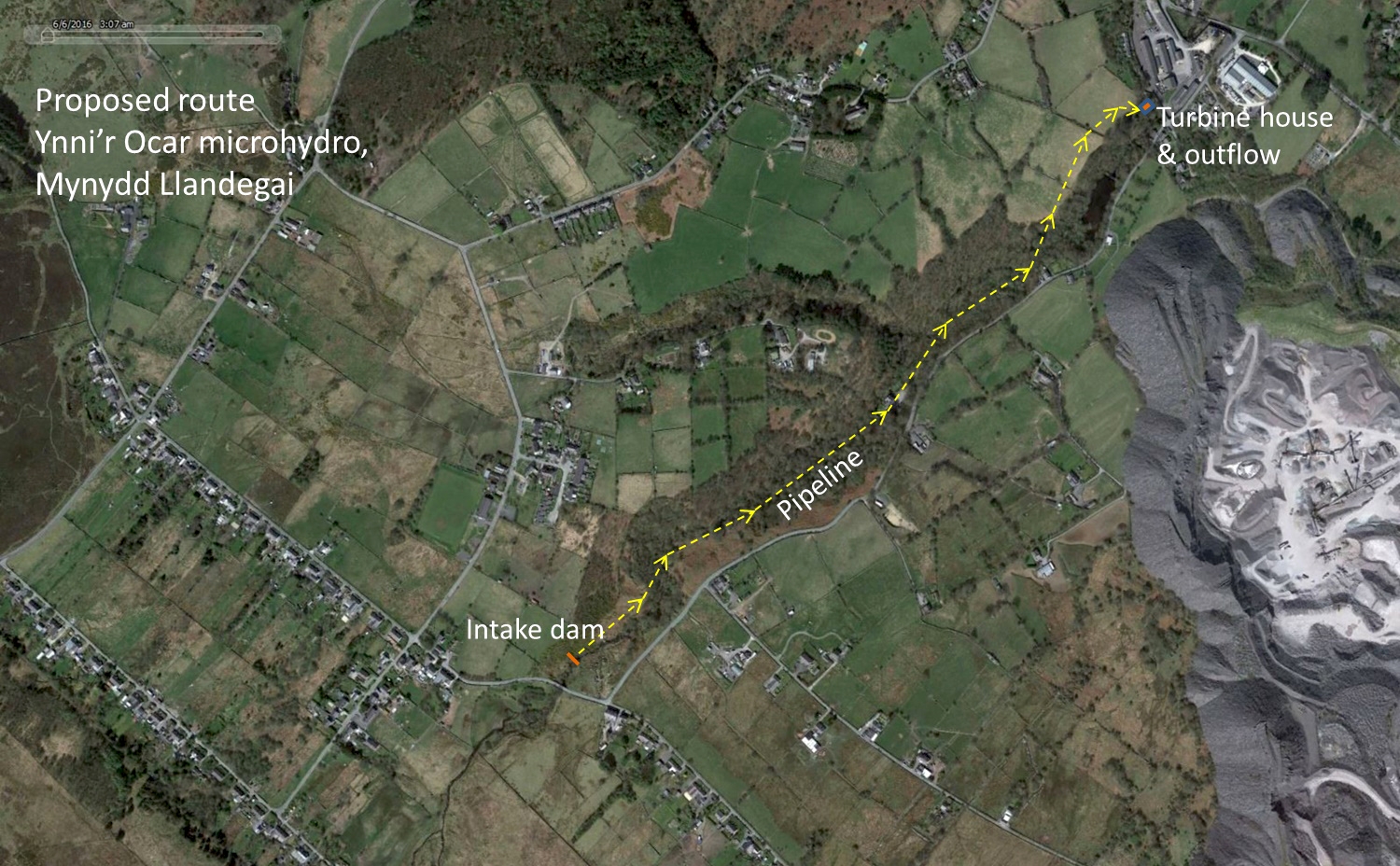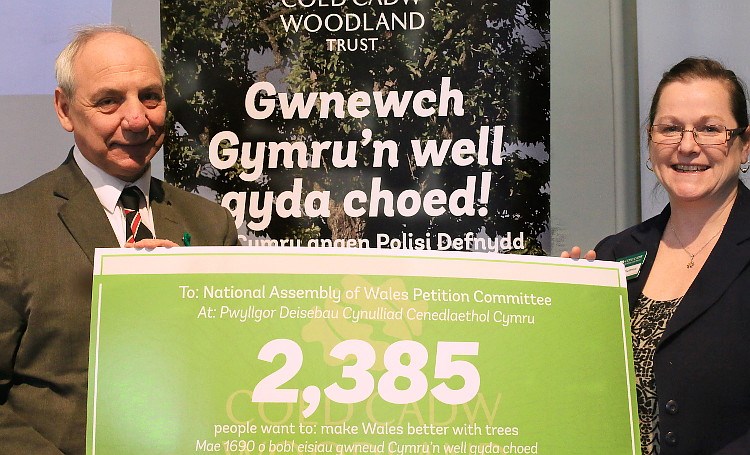PLEASE APPRECIATE THAT I GET SENT MORE INFORMATION AND LEADS THAN I CAN USE. I TRY TO RESPOND TO EVERYONE WHO CONTACTS ME BUT I CANNOT POSSIBLY USE EVERY BIT OF INFORMATION I’M SENT. DIOLCH YN FAWR
♦
![]() In this post I’m going to look at the latest YouGov for ITV/Cardiff University poll. There’s a clue to where we’re going in the title of this piece.
In this post I’m going to look at the latest YouGov for ITV/Cardiff University poll. There’s a clue to where we’re going in the title of this piece.
Obviously I’ll focus on devolution, so it makes sense to remind ourselves why we have devolution. Younger readers especially should stick with it because they might learn something.
Then I shall move on to consider what we do now that devolution has come to the end of the line.
◊
INNOVATION DESIGNED TO MAINTAIN THE STATUS QUO
Devolution did not come about following a period of political upheaval or unrest, there was no ‘Nation on the March’. Devolution was thrust upon Wales because it served the interests of the Labour Party. Later, even the Conservatives could see benefits in maintaining a management team in Cardiff docks.
To understand the genesis of devolution we need to go back to the Conservative and Unionist Party led by Margaret Thatcher coming to power in May 1979. Under her leadership the party was re-elected in 1983 and again in 1987. Even after she was deposed in November 1990 the party went on to win the 1992 general election led by John Major.
Major’s victory was a surprise to most people, including many Conservatives. But none were as shocked as the Labour Party – who can forget Labour leader Neil Kinnock’s triumphalism at the now famous Sheffield rally.
Mr and Mrs Kinnock were compensated for this and other embarrassments, first by being shunted off to Brussels (where he served as Commissioner and she as MEP), and more recently to the House of Lords. But they remain committed to the struggle against privilege and inequality.

Each year of Tory rule made devolution more attractive to the Labour Party’s hierarchy . . . based of course on the assumption that a Scottish Parliament and a Welsh Assembly would always have Labour majorities.
The thinking was that devolution would give Labour two redoubts when not in power at Westminster. With many also believing that devolution would defeat the nationalists in both countries. George Robertson, Labour’s Defence Secretary and NATO General Secretary, believed back then that devolution, ‘will kill nationalism stone dead‘.
How wrong he was, certainly about his native Scotland.
The point to remember here is that devolution was introduced by the Labour Party to serve the interests of the Labour Party. What might be best for Scotland and Wales did not enter into Labour’s thinking.
When the Tories came back to power in Westminster in 2010 they were faced with two very different situations in Scotland and Wales.
The SNP had been in government in Scotland since 2007 and any attempt to remove powers from Holyrood, or do away with devolution entirely, could have made a mildly annoying situation a lot more difficult. Whereas in Wales there was a coalition between Labour and Plaid Cymru, which meant that Wales was ‘secure’, she could be ignored.
◊
THE POLL
The results that were released a week or so ago covered a wide range of questions. Most attention has focused on two findings; the percentage wanting independence and the percentage wanting to do away with devolution altogether. Here are the full findings.
The figures quoted tend to vary so I’ll go with this WalesOnline piece by Ruth Molaski. And that’s where the figures below come from.

Though the figure in favour of independence is claimed to reach 27% when don’t knows are omitted and other adjustments made. Applying the same refinements it’s claimed that 33% would vote to abolish the Assembly were they given the chance in a referendum.
As Wrecsam Plaid Cymru councillor Carrie Harper says in this Nation.Cymru piece these figures point to “a polarisation of views amongst Welsh voters”. Which I suppose it does, at first sight. But looking at them from another angle what appear to be polar opposites do in fact agree – they reject devolution.
Due to many factors, including Brexit.
I’ve argued – from the time I voted for Brexit – that a difficult and damaging Brexit, resulting in Scotland leaving the UK and Ireland reuniting, will force on Wales the choice between being trapped in Englandandwales and considering independence.
In fact, that was one of the reasons that I voted for Brexit.
Given the impact events in Scotland could have on Wales I was surprised by the way the question below was framed in the poll.

Surely, it should have tried to establish whether Scotland becoming independent would make Welsh people more likely to support the independence option? So why the obtuse question about positive or negative – are we talking about batteries?
As it’s worded, I would obviously answer ‘very positive’. Whereas a BritNat would answer ‘very negative’. But we would be saying the same thing in that we agree Scottish independence will increase the chances of Welsh independence. But the findings, as they’re displayed, don’t show that.
Why wasn’t the question better worded?
◊
A SYSTEM NOT DESIGNED TO DELIVER NOT DELIVERING
In her article Carrie Harper says that there is a feeling in the north east that ‘Cardiff doesn’t care’. I can tell her that this sentiment is not restricted to her home patch – it’s the same in Swansea, the Valleys, Gwynedd, Pembrokeshire, Powys.
In economic terms devolution has failed every part of Wales but Cardiff.
And yet, we keep electing Assembly Members to represent us who promise the earth, then they go down to Cardiff . . . and perpetuate this Cardiff-centric system. They betray us every time, no matter where we live and no matter which party we vote for.
One reason Cardiff’s done well out of devolution is because it’s used as a ‘showcase’. Visiting dignitaries, politicians, entertainers, rugby and football fans, etc, go no further than Cardiff. They see the investment, the cranes on the skyline and think, ‘Oh! devolution must be working for Wales’.

Using Cardiff as a showcase city, to give a false impression of prosperity and progress, is symptomatic of a more general problem with the ‘Welsh Government’, that of show over substance. At it’s worst, it’s virtue signalling. But it’s not confined to the Labour Party.
Looking at the self-styled ‘progressive’ parties – Labour, Plaid Cymru, Lib Dems – I see parties playing to a gallery made up of a tiny minority within Wales and a much bigger audience outside of Wales with which that minority identifies.
What I mean is, giving a vote to the toe-rag doing time for robbing your Nan might get favourable column inches in the Guardian but Dai Public doesn’t support it and it does sod all to improve his life.
The ‘Welsh Government’ has declared a climate emergency. Of course it won’t make any difference on a global scale, not when Japan is planning to build 22 coal-burning power stations, and China many more. It’s not even as if the ‘Welsh Government’ takes its own declaration seriously, because if it did it would organise a functioning system of public transport, and it wouldn’t be funding Aston Martin to come here to make cars with gas-guzzling V12 engines.
But Aston Martin is more likely to go bust than it is to set up in Wales. It will join a long, long list of failed investments, money wasted, by politicians who know nothing about business and are terrified of Wales having a successful indigenous economy because it would lose them votes and give the natives the wrong ideas.
So we are served up empty rhetoric and futile gestures.
Not only do the ‘progressive’ parties ignore the interests of Welsh people but very often they introduce ‘Ooh look at us – aren’t we virtuous’ legislation that actually works against the interests of Wales.
For example, people entering care homes in Wales can keep £50,000 before they have to start paying for their care. The figure for England is £22,500. This is one reason that Wales sees an influx of retirees and elderly people from England adding to the burden on our NHS. Our ‘progressives’ would like to do away entirely with care home charges.
Money to fund this generosity must come from other budgets; which helps explain why our infrastructure is so poor, why our kids don’t get the education they deserve.
But now the ‘Welsh Government’ wants to punish us even more by introducing a tax to help fund care for the elderly and disabled . . . many of whom have been attracted to Wales by the £50,000 limit, free prescriptions and other gestures.

Abolishing care home fees will result in an epidemic of granny dumping, they’ll be queuing at the border. It will be a disaster because the ‘progressives’ will not introduce a residency qualification to stop the system being abused. That would be ‘discriminatory’. (Truth is, they’re terrified of headlines in the Sun and the Daily Mail reading ‘Welsh bastards discriminate against our brave grannies . . . Dunkirk . . . Vera Lynn . . . )
And to expose how damaging devolution is, the Conservatives and the Brexit Party would support this economic insanity because they rely on the Invasion of the Wrinklies (PG) to provide much of their support.
You have to conclude that any administration planning to introduce a tax on a poor people to subsidise richer people moving to their country must hold the electorate of that poor country in utter contempt.
Another reason Wales is poor and badly run is because of the power of the third sector. Here in Wales – uniquely – the third sector has a role in government. The Wales Council for Voluntary Action, which serves as the umbrella body for the third sector, and operates almost as a department of the ‘Welsh Government’, is quite open about its role.

This is why Wales has the biggest third sector on Earth, filled with leeching luvvies pulling down huge salaries to ‘combat’ problems they’ll never solve because it would put them out of a job; and to ensure they have enough ‘clients’ they import many of them from England.
The third sector coupled with Wales’ colonial relationship with England explains why the towns of the north coast have the biggest drugs rehabilitation industry in the known world.
Thanks to organisations such as Cais Ltd, based in Llandudno, which owns a number of properties, and is funded to the tune of £2.9m a year by the Wales European Funding Office . . . then there’s £1.6m from the NHS, £1.7m from local authorities, and a few million from other sources.
The Cais entry on the Charity Commission website says under the Documents tab that this company operates in ‘Wales And The Marches’. But the map found under the Operations tab tells the truth.

Money given to Wales by the EU to raise standards is being used to further lower standards by importing drug addicts, alcoholics, criminals and God knows what else from north west England.
The driving principle of devolution seems to be using Wales for the benefit of just about everybody but the Welsh.
That’s why we have wind turbines that don’t turn, and hydro schemes that locals aren’t allowed to know anything about – ‘Saving the planet, innit’.
‘Rural initiatives’ mean tasteless and culturally damaging tourism developments, zip wires and the like. Or else it’s turfing Welsh farmers off their ancestral land at the behest of George Monbiot and his cohorts with the Summit to Sea scam aka ‘Lebensraum for Guardian readers’.
The ‘Welsh Government’ pushes through housing developments that Wales doesn’t need, funds housing associations many of which prefer not to have Welsh tenants, and does nothing while Welsh communities die when every property that comes up for sale is bought as a holiday or retirement home.
Wales is being turned into a retirement and recreation area for England, a dumping ground for England’s problems, and the pot of gold at rainbow’s end for every crook and shyster looking to make easy money.
But nothing is ever done for the Welsh.
Our politicians are insulated from the system they oversee by hiding away in Cardiff Bay, a world unto itself, hermetically sealed from reality. Where truth is whatever the third sector or the lobbyists decide best serves their interests.
An ugly place where reputations can be destroyed. And men. A cess-pit of corruption and treachery Wales can no longer afford.
◊
AT THE CROSSROADS
There is nothing to be said in favour of devolution. After twenty years it should be obvious to all that it has failed the Welsh nation on every conceivable level. Yes, I talk of a nation; because without it there is no Wales.
Of course the Labour Party is largely to blame, but things would be no better with Plaid Cymru in control. If anything, things would be worse; for not only is Plaid Cymru further to the left than Labour, it has also been infiltrated by ‘woke’ lunatics.
Wales needs new political parties, fresh faces, and a whole new approach to running this country. No more virtue signalling, no more niche politics, no more identity politics, no more pretending that caving in to hedge funds is ‘saving the planet’, and no more ‘influence’ from the third sector.
What I’ve always said about devolution is now the accepted view of a majority of Welsh people, as the poll showed. The only question is which course we take from here. There are only two real options.
As I’ve already said, after Scottish independence and Irish reunification we can either submit to Englandandwales or else we go for independence. Devolution is dead. Nobody killed it, nobody needed to kill it, it destroyed itself.
Few will mourn its passing.
Time to get our people thinking about independence, and to do that we must have political parties grounded in the real world, in Welsh communities, determined to serve those communities and this nation of communities. These new parties must be ready to contest the 2021 Assembly elections.
And the more the merrier. Because with four or five Unionist parties run from London, and Plaid Cymru having such a narrow appeal, independence was impossible to achieve. Let’s broaden the appeal and shift the focus of debate away from London and the UK so that independence becomes the issue in Wales as it is in Scotland.
From now on Welsh politics must be about Wales, and the Welsh people. Let’s offer our people a real choice. No more, ‘What Unionist party should I vote for?’ but instead, ‘Which of the independence parties shall I choose?’
Spread the word! Devolution is dead! It’s time to move on!
♦ end ♦



























































